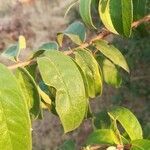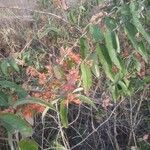| Therapeutic use
|
Hypnotics and sedatives (bark), Leprosy (bark), Anti-HIV agents (flower), Antineoplastic agents (flower), Astringents (flower), Avian myeloblastosis virus (flower), Diabetes mellitus (flower), Diarrhea (flower), Dysentery (flower), Disorder of ejaculation (flower), Erysipelas (flower), Hematemesis (flower), Hemoptysis (flower), Hemorrhage (flower), Hemorrhoids (flower), Hemostasis (flower), Hygroscopic agents (flower), Inflammatory bowel diseases (flower), Leukorrhea (flower), Liver diseases (flower), Menorrhagia (flower), Pregnancy (flower), Pregnancy complications (flower), Prolapse (flower), General tonic for rejuvenation (flower), Skin diseases (flower), Smallpox (flower), Toothache (flower), Disorder of mucous membrane (flower), Cooling effect on body (flower), Anti-bacterial agents (leaf), Avian myeloblastosis virus (leaf), Snake bites (leaf), Antidotes (root), Astringent (unspecified), Cancer (unspecified), Hemostat (unspecified), Stimulant (unspecified), Tumor(Abdomen) (unspecified), Dysentery (unspecified), Atrophy (unspecified), Bactericide (unspecified), Bladder (unspecified), Cachexia (unspecified), Chancre (unspecified), Cholera (unspecified), Colic (unspecified), Cough (unspecified), Emetic (unspecified), Eye (unspecified), Fever (unspecified), Fracture (unspecified), Myalgia (unspecified), Night-Blindness (unspecified), Parturition (unspecified), Puerperium (unspecified), Refrigerant (unspecified), Smallpox (unspecified), Sore (unspecified), Sore(Veterinary) (unspecified), Syphilis (unspecified), Bite(Dog) (unspecified), Viricide (unspecified), Ache(Ear) (unspecified), Catarrh (unspecified), Dropsy (unspecified), Fungicide (unspecified), Hemorrhage (unspecified), Infertility (unspecified), Menorrhagia (unspecified), Pregnancy (unspecified), Rabies (unspecified), Splenitis (unspecified), Carbuncle (unspecified), Wound (unspecified), Abortifacient agents (unspecified), Alcoholic intoxication (unspecified), Antipyretics (unspecified), Astringents (unspecified), Common cold (unspecified), Diarrhea (unspecified), Disinfectants (unspecified), Erysipelas (unspecified), Hematemesis (unspecified), Hematologic diseases (unspecified), Leukorrhea (unspecified), Thirst (unspecified), Ulcer (unspecified), Uterine diseases (unspecified), Anthelmintics (unspecified), Antidotes (unspecified), Diabetes mellitus (unspecified), Hemoptysis (unspecified), Hemostatics (unspecified), Hypnotics and sedatives (unspecified), Infection (unspecified), Jaundice (unspecified), Leprosy (unspecified), Liver diseases (unspecified), Pain (unspecified), Skin diseases (unspecified), Wound healing (unspecified), Cooling effect on body (unspecified), Cholera (whole plant), Fever (whole plant), Splenic diseases (whole plant), Sprains and strains (whole plant), Wounds and injuries (whole plant), Antepartum hemorrhage (whole plant)
|







